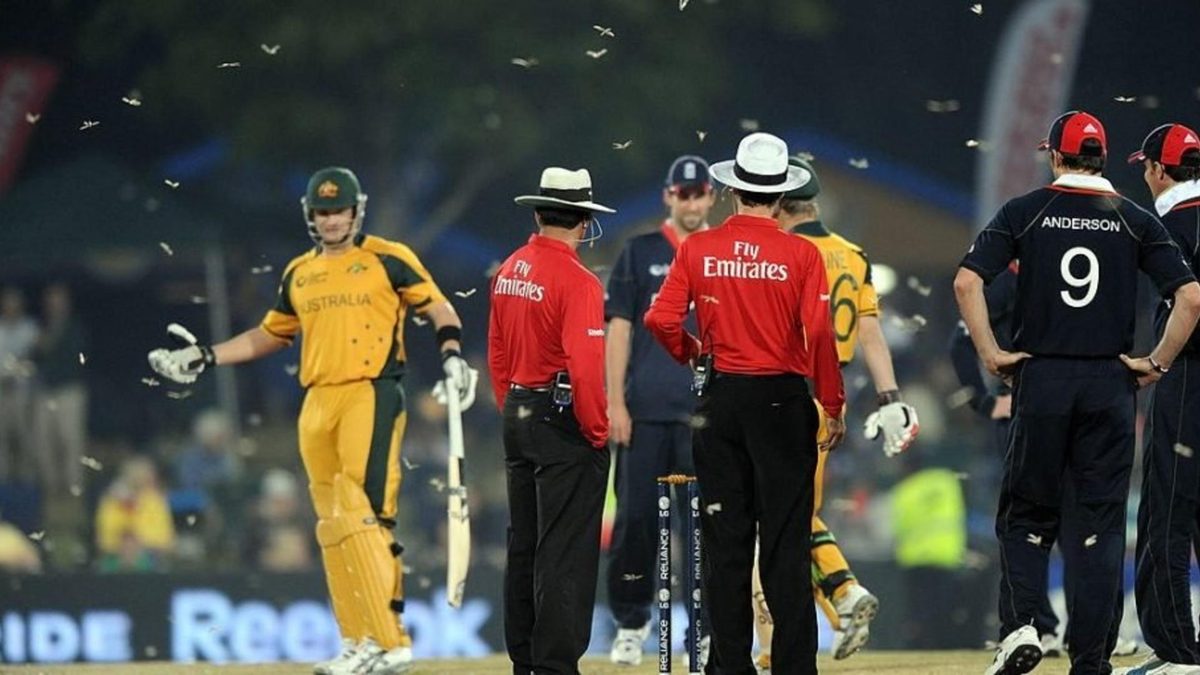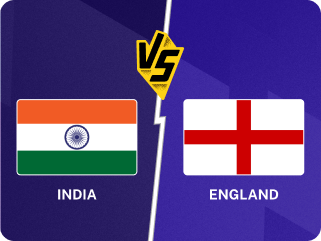
Despite its etymology staying largely clear of entomology, cricket ended up sharing its name with an insect. Over years, it has had its fair share of insectile invasions too, writes Abhishek Mukherjee.
Major day-night cricket was introduced in India in 1983/84, with a match between Bombay and the Rest of India, and an exhibition match between India and Pakistan. The Indians had played under lights in Australia, but they had a new problem here – “the large insects which suddenly came from nowhere to rest on the grass.”
In their pursuit to saved runs, the fielders were left with little options but to unwillingly stomp on insects. “There were enough crunching noises on the field to make it sound like a theatre where everybody was eating potato wafers,” described Sunil Gavaskar in Runs ’n’ Ruins.
Insect attacks during cricket matches have been described in words less graphic than these, but the fate of the creatures have been on similar lines. On the night of October 2, Rohit Sharma and Haris Rauf swallowed bugs during Twenty20 International matches. These were hardly the first insects to invade a cricket match.
Strike fly and friendly flies
The 1897/98 Ashes was levelled 1-1. Australia had piled 573 in the first innings in the third Test match, in Adelaide. England, 295 behind, were asked to follow on. They were 262-6 in the second innings, staring at defeat – but Archie MacLaren was batting, on a masterful 124.
At this point, Monty Noble came on to bowl at him. Just when Noble released the ball, a fly hit MacLaren in the eye. A hapless MacLaren still put bat on ball – but it was a mere edge that JJ Kelly claimed behind the stumps. MacLaren accepted the decision. England lost by an innings – and the series, 1-4.
Over a century later, during the Boxing Day Test match of 2013/14, George Bailey failed to hold on to a near-impossible catch of Kevin Pietersen. But Pietersen was far from happy. He was angry, cursing, and… coughing, for he had swallowed a fly.
During the Bodyline series, the locals found a greater menace than their flies. As he would admit in interviews, Douglas Jardine had not arrived in Australia to make friends – and he kept his word. On one occasion, when the pesky Sydney flies bothered him, Jardine paused a moment to swat them away. Almost on cue, Yabba’s legendary voice boomed: “Leave those flies alone, they are your only friends here.”
To bee? Or not to bee?
There are multiple instances of bees holding up cricket matches – even at international level – and cricketers wisely throwing themselves on the ground. A swarm that invaded Lampeter when they hosted Bronwydd in 1988, was described as “very large”.
On some occasions, things went of hand. During a minor match in Bangalore in 1981, some children threw stones at a beehive. The bees, for some reason, decided to take revenge on the cricketers. Six cricketers and an umpire had to be rushed in a hospital. The match was abandoned.
Bangalore has a curious connection with bee invasions. In 2018/19, Rahul Dravid, one of the city’s most famous sons, was seen running for safety during a match between India A and England Lions at Thiruvananthapuram. The bees attacked Chinnaswamy during at least two Test matches – against Pakistan in 1979/80 and against South Africa in 1999/00.
A month after the second incident, a beehive on the terrace of the MA Chidambaram Stadium in Chennai was disturbed, and the inevitable followed. Early lunch had to be taken. Unlike the cricketers, who escaped unharmed, some spectators and media personnel were stung.
Elsewhere, in 1962, a match between Oxford and Worcestershire at The University Parks had to be held up for the same reason. It marked a rare occasion when a beekeeper was summoned to a cricket match – something that was repeated during a Plunket Shield match between Wellington and Canterbury in 2021/22.
The ant and the grasshopper
The most renowned incident of flying ant invasion took place during the 2009 Champions Trophy semi-final between Australia and England at SuperSport Park, Centurion. Play was held up for 12 minutes. The same creatures also invaded a match between Chard Cricket Club and Sampford at Arundel in 1990.
In 1947, a plague of grasshoppers (perhaps biologically closer to crickets than most insects) held up play during a Sheffield Shield match between South Australia and Queensland.
The pitch tamperers
Ahead of England’s 1935 Test match against South Africa, the pitch at Lord’s had been invaded by leatherjackets. These insects did not merely consume grass: they eradicated them from the roots, reducing the pitch to a crumbling, dusty surface.
On this pitch, South Africa unleashed Xen Balaskas, their Greek googly bowler. Balaskas took only 22 wickets in his nine-Test career, but on a pitch that turned square early on, he ran through England twice, with 5-49 and 4-54. It was the first Test match South Africa won on England soil.
Unfriendly neighbourhood
What is it with insects and South Africa’s historic Test wins against England?
South Africa beat England for the first time in Johannesburg in 1905/06. It was a humdinger as well, for Dave Nourse and Percy Sherwell added 48 for the last wicket to clinch a thriller.
Several reports agree on the fact that the stumps at one end were not disturbed for almost an entire day of this Test match. In fact, the wicketkeepers did not even attempt to stump or run out any batter.
England wicketkeeper Jack Board – whom the Wisden Almanack would hail as “fearless” in his obituary – noticed a reasonably large spider weaving its web across the three stumps. When Board informed Plum Warner, his captain, the latter asked “not to brush it away.” The spider had the full day to spin a web of considerable size.
What’s in a name?
It is often forgotten that the West Indian domestic teams are technically international sides. When they play as a team, the Jamaican national side go by the Scorpions.
A more curious case is of the Mambalam Mosquitos, a Madras club that deliberately avoids the ‘e’ before the final ‘s’ in its name – for its cricketers are often “likened to the boxers in the Mosquito category”.
While we are still on names, it will be unfair to not mention the Worm – the graph that has been faithfully comparing cumulative run rates in limited-overs cricket.
And, of course, there is the Spider-Cam, that dangling gadget that sometimes comes in the way of action, forcing the umpires to call dead ball.








